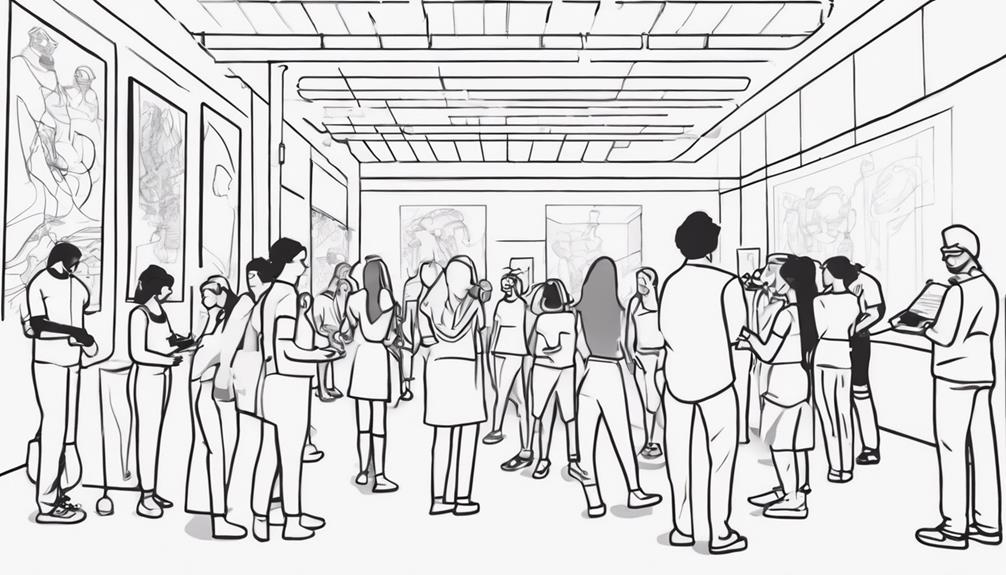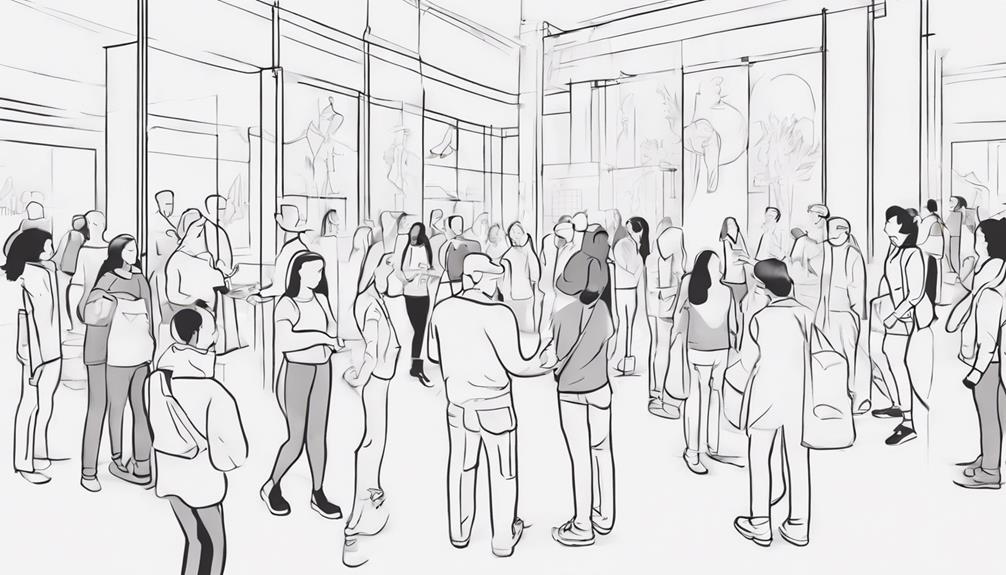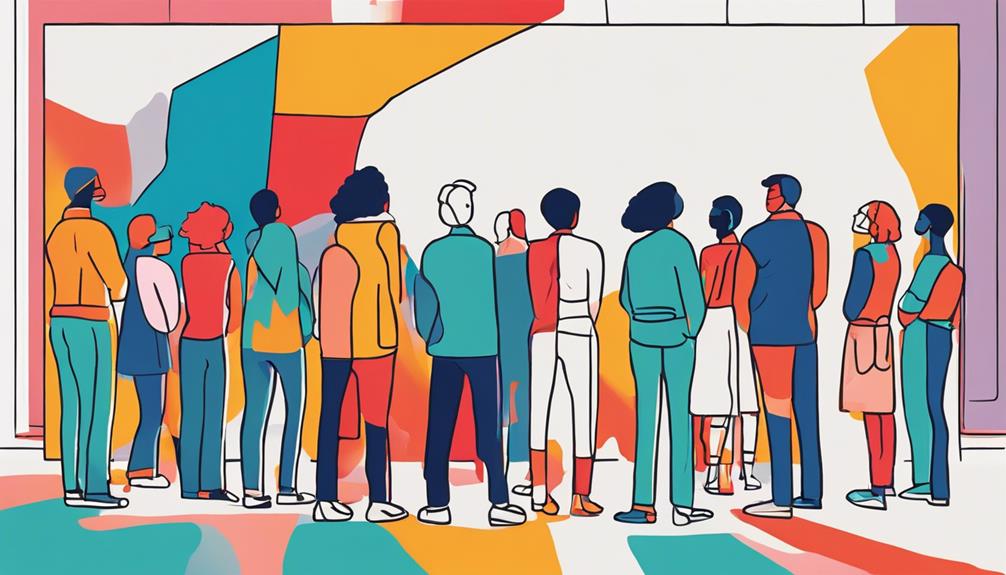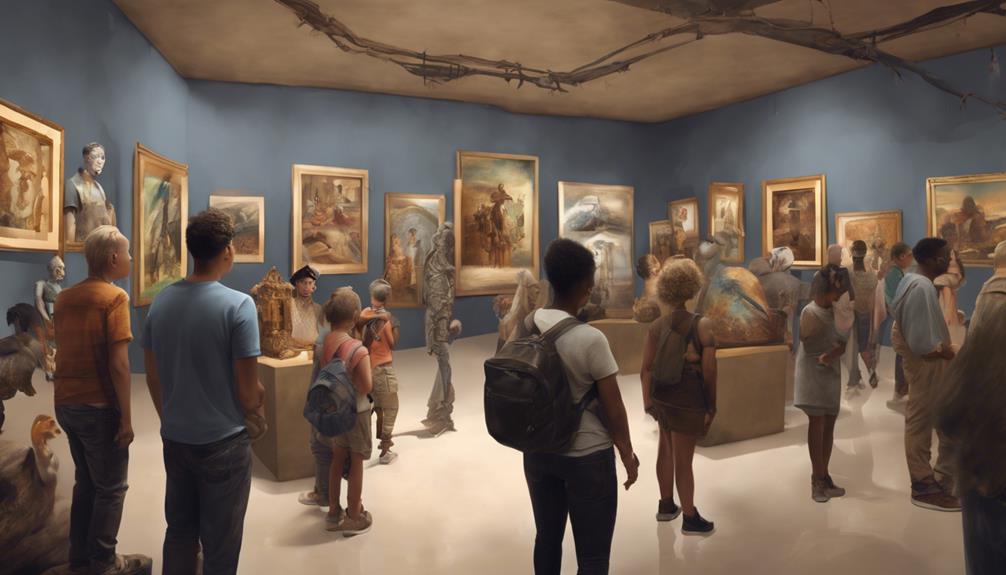The motivations behind individuals visiting museums are multifaceted and extend beyond mere curiosity or leisure. Exploring the reasons underpinning this cultural phenomenon reveals a complex interplay of educational, historical, artistic, and societal dynamics that converge within the museum setting. The allure of these institutions lies not only in the display of artifacts but also in the transformative power they hold over visitors. By unpacking the psychological, sociological, and anthropological aspects of museum attendance, a deeper understanding emerges, shedding light on the intrinsic human drive to seek out these bastions of knowledge and creativity.
Key Takeaways
- Museums offer diverse educational opportunities for children and professionals.
- Visitors gain cultural enrichment, inspiration, and a deeper understanding of global heritages.
- Museums foster community engagement, social interaction, and neighborhood bonds.
- Historical reflection, artistic appreciation, creativity boost, and innovation are stimulated in museum settings.
Educational Opportunities at Museums

Museums serve as vital educational institutions, offering diverse programs and resources aimed at fostering learning and intellectual growth. Around 80% of US museums provide educational programs for children, emphasizing learning opportunities. This highlights the museums' commitment to education, with over $2 billion allocated annually towards educational activities. Institutions like Eureka, Natural History Museum, and Science Museum actively engage children in educational experiences, enhancing their learning through interactive exhibits and workshops. Tate in London stands out by offering the Tate Kids website, which provides interactive art exploration for children, promoting education through creativity.
Moreover, museums offer online learning resources for museum professionals, showcasing their dedication to educational initiatives beyond physical visits. The engagement of museum professionals in continuous learning reflects the evolving nature of educational practices within museums. By providing such educational opportunities, museums not only enrich children's learning experiences but also contribute to the professional development of individuals working within the museum sector.
Cultural Enrichment and Inspiration
Cultural enrichment within museum settings is facilitated through exposure to a multitude of exhibits, artworks, and historical artifacts, providing visitors with a rich tapestry of inspiration and creativity.
- Museums offer visitors the opportunity to explore diverse exhibits, showcasing a wide array of artistic expressions and historical narratives.
- The presence of unique artifacts in museums ignites inspiration and encourages individuals to think critically and appreciate the beauty of creativity.
- By learning about different cultures, traditions, and historical events represented in museums, visitors gain a deeper understanding of global heritages.
- Cultural immersion in museums not only enriches individuals personally but also fosters a sense of interconnectedness with the world at large, promoting empathy and appreciation for diverse perspectives.
Community Engagement in Museum Settings

Within the dynamic realm of museum settings, community engagement emerges as a pivotal element in fostering a vibrant and inclusive cultural landscape. Museums play a crucial role in facilitating community involvement through a variety of initiatives such as hosting community events, educational programs, and diverse museum events. By organizing activities like concerts, conferences, and Easter egg hunts, museums create opportunities for local residents to connect with different groups within their community. These interactions not only strengthen neighborhood bonds but also foster shared experiences among visitors. Museums, like the Hill Aerospace Museum, attract diverse visitors, serving as social hubs that cater to the interests of a wide range of individuals. Through these endeavors, museums become more than just repositories of knowledge; they evolve into interactive spaces that actively engage with their surrounding communities, enriching the cultural tapestry and promoting a sense of belonging among all participants.
| Community Engagement Initiatives | Description |
|---|---|
| Community Events | Concerts, conferences, etc. |
| Neighborhood Bonds | Strengthening local connections |
| Diverse Visitors | Attracting a variety of individuals |
| Shared Experiences | Fostering connections among visitors |
| Museum Events | Educational programs, social activities |
Historical Perspective and Reflection
In exploring the theme of historical perspective and reflection within museum contexts, it becomes evident that visitors are drawn to these institutions seeking a deeper understanding of human history and cultural evolution.
- Insights into Human Progress: Museums provide a lens through which visitors can observe the trajectory of human progress and perseverance over time, showcasing our capacity for growth and resilience.
- Exploration of Lost Cultures: By delving into artifacts and exhibitions from lost cultures, visitors can reflect on the diversity and richness of human history, gaining a deeper appreciation for the interconnectedness of societies past and present.
- Preservation of Historical Significance: Museums play a crucial role in documenting and preserving history, allowing individuals to engage with and reflect on the past experiences of humanity through tangible and intangible heritage.
- Enhanced Historical Perspective: Historical artifacts in museums serve as tangible connections to bygone eras, encouraging visitors to reflect on the significance of human achievements, challenges, and the enduring impact of history on contemporary societies.
Artistic Appreciation and Creativity Boost

How do museums contribute to enhancing artistic appreciation and fostering creativity among visitors? Museums play a crucial role in nurturing artistic appreciation and inspiring creativity through their diverse collections and engaging exhibitions. By exposing visitors to a wide range of art forms, styles, and cultural expressions, museums have the power to ignite the imagination, stimulate creative thinking, and offer new perspectives on the world. Engaging with artworks in a museum setting can lead to the development of innovative ideas and a deeper passion for artistic expression. The following table illustrates how museums boost artistic appreciation and creativity:
| Ways Museums Enhance Artistic Appreciation and Creativity | Examples |
|---|---|
| Diverse Collections and Exhibitions | Showcasing various art forms and styles |
| Inspire Creativity | Encouraging visitors to explore their own creativity |
| Stimulate Imagination and Boost Creative Thinking | Providing a space for innovative ideas and inspiration |
Frequently Asked Questions
Why Do People Visit the Museum?
People visit museums for cultural exploration, historical education, architectural marvels, interactive exhibits, social experiences, intellectual stimulation, visual aesthetics, learning opportunities, curiosity fulfillment, and community engagement. Museums serve as platforms for individuals to immerse themselves in diverse narratives, engage with curated artifacts, and foster a deeper understanding of art, history, and heritage. The multifaceted experiences offered by museums cater to a wide range of interests, contributing to personal growth and societal enrichment.
What Is the Main Purpose of a Museum?
The main purpose of a museum is to serve as a hub for cultural preservation, historical education, community engagement, and artifact conservation. Museums provide a rich learning experience through public outreach and stimulate curiosity while fostering social interaction. They play a vital role in knowledge sharing and inspire visitors to seek inspiration. By creating meaningful connections between people and diverse collections, museums contribute significantly to the exploration and understanding of the world around us.
What Attracts People to Museums?
Museums captivate individuals through a blend of cultural history, educational experiences, and architectural beauty. The allure of interactive exhibits, historical artifacts, and visual storytelling engages visitors, sparking curiosity and fostering hands-on learning. Museums showcase local artists, celebrate world cultures, and provide immersive experiences that offer insight and inspiration. The diverse range of offerings within museums appeals to a broad audience seeking knowledge and personal enrichment.
Why Do People Go to Art Museums?
Art museums serve as cultural hubs where individuals engage in art appreciation, historical insight, and creative inspiration. Visitors seek visual stimulation, educational experiences, and opportunities for personal reflection. Through aesthetic enjoyment and intellectual stimulation, art museums foster social interaction and facilitate cultural exploration. These institutions offer a platform for diverse artistic expressions, styles, and movements, enriching visitors' understanding and appreciation of the arts.
Conclusion
In conclusion, the multifaceted benefits of museums, including educational opportunities, cultural enrichment, community engagement, historical perspective, and artistic appreciation, underscore their importance as valuable institutions in society. Like a compass guiding travelers through uncharted territory, museums serve as beacons of knowledge, inspiration, and reflection. Their role in preserving and transmitting cultural heritage ensures that future generations continue to benefit from the wealth of human experience and creativity encapsulated within their walls.
